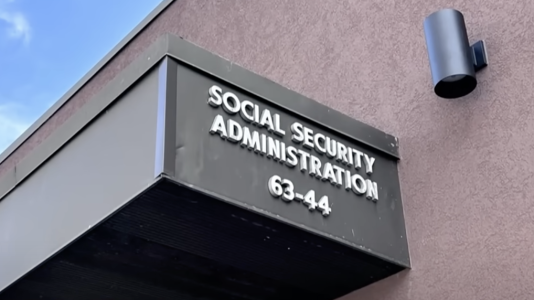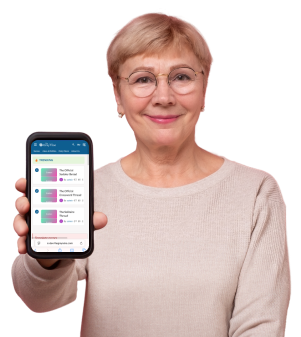You spoke, they listened–Social Security revises policy following public pushback
- Replies 5
In a world where change is the only constant, even the Social Security Administration (SSA) isn't immune to the winds of transformation—and sometimes, the pushback that follows.
Recently, the SSA found itself at the center of a storm of controversy over proposed changes to its regular processes. The outcry from beneficiaries, advocacy groups, and lawmakers was loud and clear, leading to a significant policy reversal.
Here at The GrayVine, we understand how vital these issues are to you, and we're here to break down what this means for your benefits and peace of mind.
The SSA's initial plan was a tough pill to swallow for many. It required all new and existing beneficiaries to physically visit a Social Security field office to verify their identity.
This mandate was set to affect a wide range of individuals, from those applying for Social Security Disability Insurance and Medicare to recipients of Supplemental Security Income.
The thought of additional hurdles for essential services caused an uproar, especially considering the simultaneous closure of 47 field offices across 18 states.
This affected anyone who needed to verify their bank information, including families with children who are beneficiaries of Social Security, but cannot verify specific information online.

The backlash was swift and united. Advocacy groups, members of Congress, and the public raised their voices against what they saw as unnecessary barriers for vulnerable populations.
The AARP, a powerhouse in advocating for the interests of older Americans, was particularly vocal. Their Chief Advocacy and Engagement Officer, Nancy LeaMond, called for the SSA to reconsider its approach and engage in a more transparent and inclusive process.
Source: ABC10 / Youtube.
In response to the widespread concern, the SSA has taken a step back. Lee Dudek, the acting commissioner of Social Security, announced that the agency would update its policy to provide better customer service.
As a result, starting April 14th, those unable to use the SSA's online portal can complete their claims entirely over the phone, a relief for many who found the in-person requirement daunting.
“We have listened to our customers, Congress, advocates, and others, and we are updating our policy to provide better customer service to the country’s most vulnerable populations,” shared Lee Dudek, SSA’s acting commissioner of Social Security in a statement.
Dudek also added that delaying the policy start date would assist the officials in training the employees on the new procedures.
Source: KELOLAND News / Youtube.
Following the Wednesday announcement, LeaMond said that this “is a good first step by the Social Security Administration to respond to the concerns of AARP, our members, and older Americans everywhere about plans to discontinue phone service for critical Social Security customer service needs.
“Merely delaying the implementation of this change is not enough, though,” she added. “SSA should take a deliberate approach to its proposed changes to customer service that seeks public input, follows a clear communication plan, and allows a reasonable timeframe for compliance.”

Around 72.5 million people, such as retirees and children, receive Social Security benefits.
Frank Bisignano, Trump's nominee to lead the SSA, faced tough questions at his confirmation hearing about the agency's direction under the influence of Elon Musk's Department of Government Efficiency (DOGE).
Source: PBS NewsHour / Youtube.
A longtime figure in the finance world and previously an advocate for corporate protections against LGBTQ+ discrimination, Bisignano has held the role of chairman at Fiserv—a company focused on payments and financial technology—since 2020.
Speaking to CNBC in February, he stated that he is “fundamentally a DOGE person” but emphasized that “the objective isn’t to touch benefits.”
You might like: A system under pressure: What’s changing at Social Security Administration?
When questioned during the hearing about the possibility of privatizing Social Security, Bisignano said: “I’ve never heard a word of it, and I’ve never thought about it.”
So, what does this mean for you? First and foremost, it's a reminder that your voice matters.
Here's what you can do to ensure your benefits remain secure:
1. Stay updated: Keep an eye on the SSA's announcements and any changes to their policies.
2. Know your options: Understand the different ways you can verify your identity with the SSA, whether online, over the phone, or in person.
3. Speak up: If you encounter challenges or have concerns about Social Security policies, reach out to advocacy groups or your representatives in Congress.
4. Plan ahead: If you need to visit a field office or complete a process over the phone, prepare your documents and questions in advance to ensure a smooth experience.
Also read: Backtracked: Government agency reverses course on service cutbacks following media report

Have you been affected by the SSA's policy changes? Do you have tips for navigating the system or thoughts on how the SSA can improve its services? Share your stories and insights in the comments below!
Recently, the SSA found itself at the center of a storm of controversy over proposed changes to its regular processes. The outcry from beneficiaries, advocacy groups, and lawmakers was loud and clear, leading to a significant policy reversal.
Here at The GrayVine, we understand how vital these issues are to you, and we're here to break down what this means for your benefits and peace of mind.
The SSA's initial plan was a tough pill to swallow for many. It required all new and existing beneficiaries to physically visit a Social Security field office to verify their identity.
This mandate was set to affect a wide range of individuals, from those applying for Social Security Disability Insurance and Medicare to recipients of Supplemental Security Income.
The thought of additional hurdles for essential services caused an uproar, especially considering the simultaneous closure of 47 field offices across 18 states.
This affected anyone who needed to verify their bank information, including families with children who are beneficiaries of Social Security, but cannot verify specific information online.

The Social Security Administration (SSA) has partially backtracked on a plan requiring in-person identity verification for all new and existing beneficiaries. Image source: CBS News / Youtube.
The backlash was swift and united. Advocacy groups, members of Congress, and the public raised their voices against what they saw as unnecessary barriers for vulnerable populations.
The AARP, a powerhouse in advocating for the interests of older Americans, was particularly vocal. Their Chief Advocacy and Engagement Officer, Nancy LeaMond, called for the SSA to reconsider its approach and engage in a more transparent and inclusive process.
Source: ABC10 / Youtube.
In response to the widespread concern, the SSA has taken a step back. Lee Dudek, the acting commissioner of Social Security, announced that the agency would update its policy to provide better customer service.
As a result, starting April 14th, those unable to use the SSA's online portal can complete their claims entirely over the phone, a relief for many who found the in-person requirement daunting.
“We have listened to our customers, Congress, advocates, and others, and we are updating our policy to provide better customer service to the country’s most vulnerable populations,” shared Lee Dudek, SSA’s acting commissioner of Social Security in a statement.
Dudek also added that delaying the policy start date would assist the officials in training the employees on the new procedures.
Source: KELOLAND News / Youtube.
Following the Wednesday announcement, LeaMond said that this “is a good first step by the Social Security Administration to respond to the concerns of AARP, our members, and older Americans everywhere about plans to discontinue phone service for critical Social Security customer service needs.
“Merely delaying the implementation of this change is not enough, though,” she added. “SSA should take a deliberate approach to its proposed changes to customer service that seeks public input, follows a clear communication plan, and allows a reasonable timeframe for compliance.”

Following backlash and criticism, the SSA now allows certain claimants to complete their applications entirely over the phone instead of in person. Image source: CBS News / Youtube.
Around 72.5 million people, such as retirees and children, receive Social Security benefits.
Frank Bisignano, Trump's nominee to lead the SSA, faced tough questions at his confirmation hearing about the agency's direction under the influence of Elon Musk's Department of Government Efficiency (DOGE).
Source: PBS NewsHour / Youtube.
A longtime figure in the finance world and previously an advocate for corporate protections against LGBTQ+ discrimination, Bisignano has held the role of chairman at Fiserv—a company focused on payments and financial technology—since 2020.
Speaking to CNBC in February, he stated that he is “fundamentally a DOGE person” but emphasized that “the objective isn’t to touch benefits.”
You might like: A system under pressure: What’s changing at Social Security Administration?
When questioned during the hearing about the possibility of privatizing Social Security, Bisignano said: “I’ve never heard a word of it, and I’ve never thought about it.”
So, what does this mean for you? First and foremost, it's a reminder that your voice matters.
Here's what you can do to ensure your benefits remain secure:
1. Stay updated: Keep an eye on the SSA's announcements and any changes to their policies.
2. Know your options: Understand the different ways you can verify your identity with the SSA, whether online, over the phone, or in person.
3. Speak up: If you encounter challenges or have concerns about Social Security policies, reach out to advocacy groups or your representatives in Congress.
4. Plan ahead: If you need to visit a field office or complete a process over the phone, prepare your documents and questions in advance to ensure a smooth experience.
Also read: Backtracked: Government agency reverses course on service cutbacks following media report
Key Takeaways
- The Social Security Administration (SSA) has partially backtracked on a plan requiring in-person identity verification for all new and existing beneficiaries.
- Following backlash and criticism, the SSA now allows certain claimants to complete their applications entirely over the phone instead of in person.
- The implementation of the new policy has been delayed until April 14th, allowing more time to train employees on new procedures.
- The policy change had been criticised by lawmakers, advocacy groups, and AARP for placing unnecessary barriers in front of vulnerable populations.
Have you been affected by the SSA's policy changes? Do you have tips for navigating the system or thoughts on how the SSA can improve its services? Share your stories and insights in the comments below!






